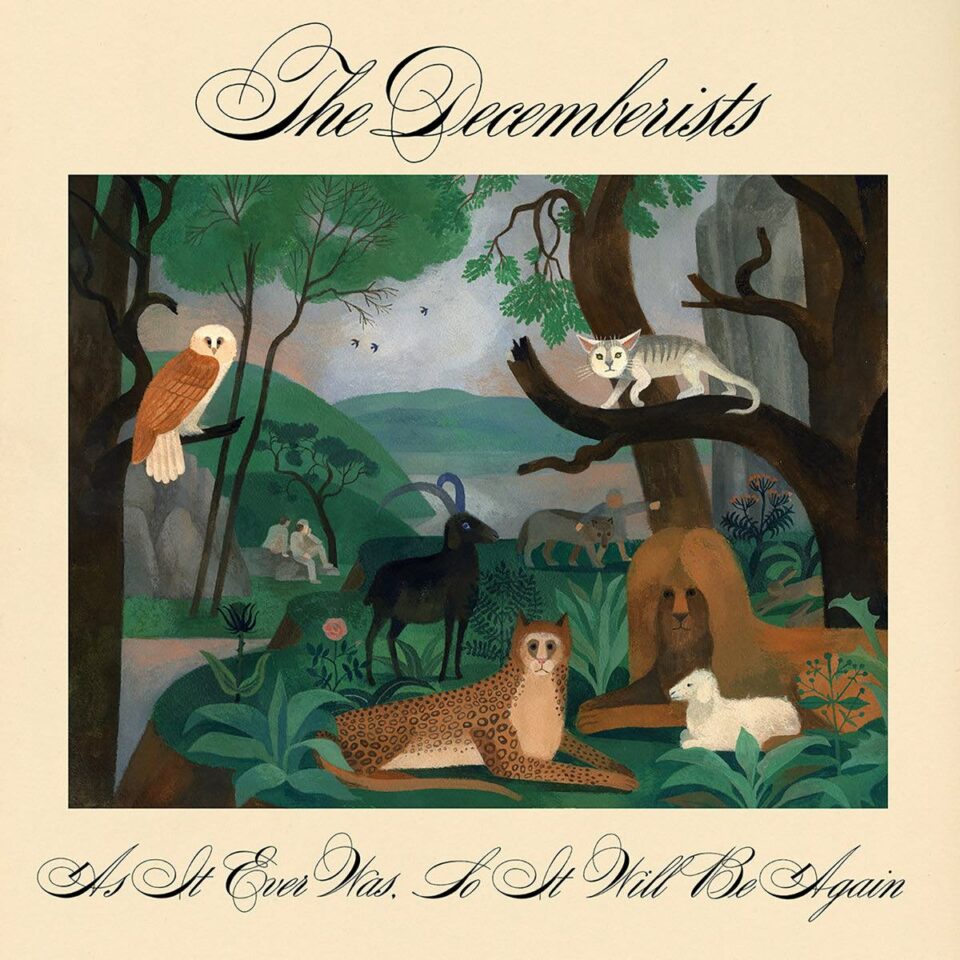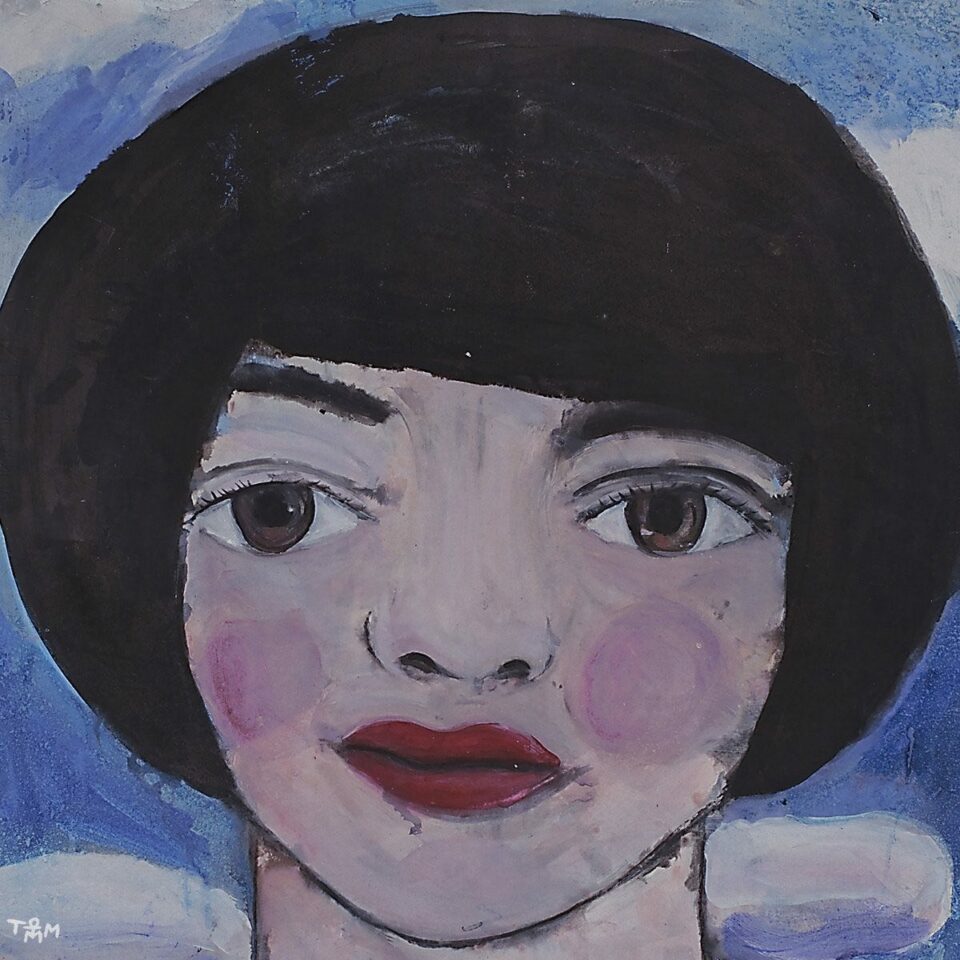Some things you do without hesitation. For instance, when Chicago-based guitarist Bill MacKay links up with fellow Chicagoan label Drag City for a new project, you just sit down and listen to it. It’s an unimpeachable combo, like peanut butter and jelly, or six beers and four shots of whiskey. MacKay is practically an institution unto himself, and even though it’s been five long years since his last solo LP, Fountain Fire, he’s managed to stay extremely busy by making records with Katinka Kleijn under the name STIR, and with American-primitivist king Nathan Bowles.
Outside of his own records, he’s played with Steve Gunn, Ryley Walker, Bill Callahan and Bonnie “Prince” Billy, and Black Duck—basically a who’s-who of the niche yet formative guitar-based rock/folk/experimental scene that’s perhaps the coolest dang subgenre on the planet. MacKay’s new album Locust Land is filled with crunchy guitar parts, prog-folk instrumentation, looming organ swells, and subtle drum parts that give the album a steady propulsion. It’s some of his strongest work, both deeply intimate and boldly cosmic.
To help break down the album, MacKay walked us through the album track by track. Additionally, after a full-band show in Chicago last night at The Hideout, MacKay will be kicking off his tour in support of the album in June—find his upcoming dates here.
1. “Phantasmic Fairy”
This brief prelude to the record is an echo of some of the so-called psychedelic music I’ve enjoyed—in this case a bit of an homage to The Beatles’ “Being for the Benefit of Mr. Kite,” with its swirling, cascading carnival and circus sounds.
2. “Keeping in Time”
“Keeping in Time” was one of those songs that came like a gift: unhurried, unlabored. The mystery of adoration. Seeing someone for a second, sometimes, but there being a flash of recognition that indicates a world of possibilities between you. This song is about that longing to connect, whether to a person, place, or vision. It could be to anyone or any part of life that draws you in. Love not as a possession, but as a mystery that rings true.
3. “Glow Drift”
Feat. Mikel Patrick Avery (percussion), Sam Wagster (bass)
“Glow Drift” appeared in this sunny melody and celebratory vibration. A song to lift you. I like the surfy guitars—a hint of joyful release. Like remembering a particular drive with special characters to the sea. The stops and starts of a journey, space for an organ note to linger, then things start galloping again. It jumps.
4. “Half of You”
This came about when I was doing a lot of songs on 4-track at home. The words have changed a bunch over time, but the central idea was this kind of reaching out to console a friend. The lines about a band touring seemed to fit in with the idea of things being sometimes very impermanent, even a solid thing like a family or a band. Great strides are made to create a life or any project, but its meaning can be elusive. It can drift from you. And people might only see half of you, not the whole picture.
5. “Oh Pearl”
This instrumental track is mostly a celebration of a very dear soul. I like the mystery in the rambling, grittiness of the layers, but also the vibrant joy of the slide guitar melody. It also features the requinto, a five-string guitar-like acoustic instrument made in Mexico by my friend Ramón Gutiérrez Hernández.
6. “Radiator”
Feat. Sam Wagster (bass)
This song came out of very heavy riffs that had been percolating and that I wanted to put together so that they amplified each other and became even larger. There’s a melody in the dirtiness that is pretty, and I like the raw, dirge-like quality of this piece. If you think about it, a radiator is actually anything that radiates energy: the sun, the mind, the eyes. But to realize it is the important thing. The more conscious we become of what we’re radiating from day to day, and minute to minute, the more magical we can be.
7. “When I Was Here”
Feat. Mikel Patrick Avery (percussion), Sam Wagster (bass)
If you get to return to hometowns and early magic places, you might see what remains of your life before. Are the people there? What’s the meaning of what you’ve passed through? It may be eternal and will always be a part of you. Adventures leave new worlds in their wake, but it’s not for everyone. Paths diverge, and you change but there are eras and experiences that never completely leave you. Mikel Patrick Avery and Sam Wagster lent this track its gorgeous, propulsive drive that was more than I could hope for. I provided voice, guitars, and electric organ. We pushed an amp hard into that raw, high-voltage territory for the solo in the coda. I’m psyched with how it came out. The first five or six passes were a wash, then I entered a different space and played the solo again. This time it was like, “Damn, I think we’re done here.”
8. “Neil’s Field”
Feat. Janet Bean (vocals)
Janet Bean lent her very angelic vocals to this piece, which is centered on my melody as played on a pipe-organ. If you’ve ever played one, you know that the pumping sound itself is really prominent and not avoidable, so you just hope it can be part of the music. And here, it is that. I added a hint of guitar, but mostly the organ and voice intertwine. Another homage—this time to Neil Young, whose music has been vital to me. I felt the melodic line was reminiscent of his work.
9. “Locust Land”
This last song, the title track of the album, seemed right as the ending song. There’s a timeless feel, and an enigmatic vibe that rises up. The modes are Eastern in color, the music a kind of ritual trance. It naturally feels to me like the soundtrack to the illumination of the self. A hypnotic piano sets the tone and tempo. There’s a tapestry of guitars making declarations, or ornamenting, and overlapping. The bridge with a counter-melody comes near the end with its own drama. The last descending line seems significant, but I don’t know quite yet what it means. I may find out. Perhaps it unlocks the doors to Locust Land.









